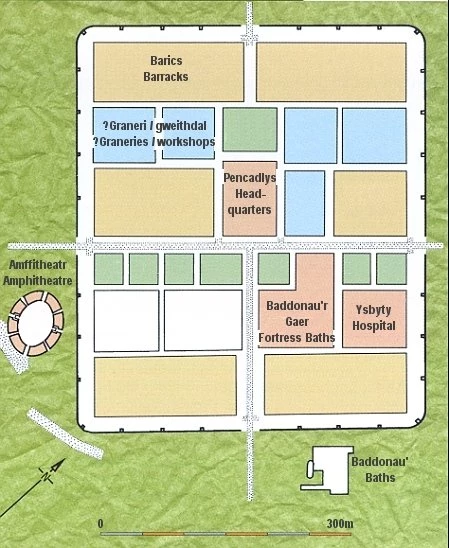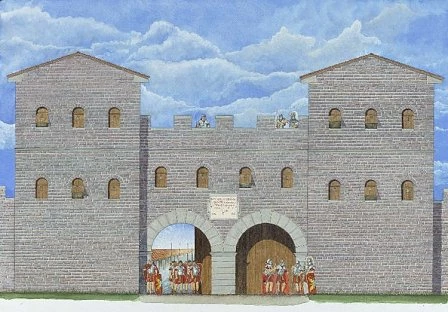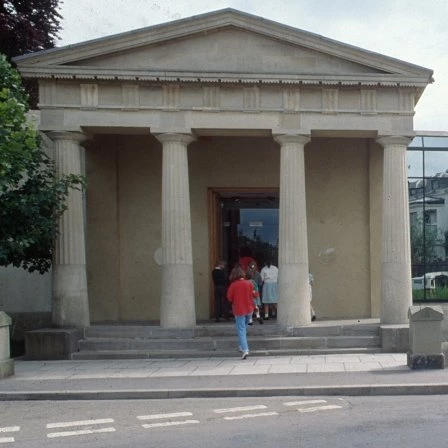Caerleon - City of the Legion
Plan of Caerleon Roman fortress.
Marble inscription, probably from the south-west gate at Caerleon.
Reconstruction of the south-west gate, Caerleon.
Reconstruction of the Roman fortress baths (Caerleon) in about AD80.
Finds from the excavations at Caerleon are on display at the Roman Legionary Museum, Caerleon.
Home to Rome's 2nd Augustan Legion for over two centuries, Caerleon is the best preserved Roman fortress in Wales.
Caerleon (Newport) is the only permanent Roman base within the borders of modern Wales. It was founded in AD 74 or 75, and used by the Second Augustan Legion, which had been stationed in various parts of southern Britain since the Roman invasion of AD43.
Caerleon remained the headquarters of the Second Augustan Legion for more than 200 years.
The fortress was known to the Romans as Isca, taking its name from the nearby River Usk.
Excavations at Caerleon since the 1920s have allowed us to build up a good understanding of the fortress.
The site
The fortress is a rectangular enclosure 490m by 418m (535 × 457 yards) giving an area of 20.5ha (50 acres). To the south-west lie a parade-ground and an amphitheatre and, beyond, various buildings of a civilian settlement have been found.
The defences were first built in earth and timber but were replaced in stone about AD 100. At the centre of the fortress, beneath the present parish church, was the headquarters building (principia) and next to it the commanding officer’s house. Remains of the fortress baths (the baths are now in the care of Cadw, who have restored them as a visitor attraction), a hospital, officers’ houses and various workshops have also been found. But over half the area would have contained barrack blocks to house the ordinary soldiers – over 5,000 of them. Most of these buildings were first constructed in wood; they were gradually rebuilt in stone from the 2nd century onwards.
Activity at the fortress appears to have been at its peak at the close of the first and beginning of the 2nd century. After this the legion was involved in the building of Hadrian’s Wall across northern England. During the reign of Antoninus Pius (AD 138–161) the occupation of Caerleon decreased dramatically, probably indicating a more major commitment to the north.
Around AD 300 the legion left Caerleon for good, with many of the main fortress buildings being demolished. This is probably related to the seizure of power in Britain by Carausius and Allectus (AD 287–96) and their need to defend the south of England from expected invasion by the official emperors Diocletian and Constantius.
Some buildings at Caerleon were certainly in use up to the mid 4th century and some streets were resurfaced after AD 346–8, but post-350 coins are sparse, suggesting little activity on the site after this date.
By AD 1188, when Gerald of Wales visited the fortress, it had been reduced to a stately ruin.




